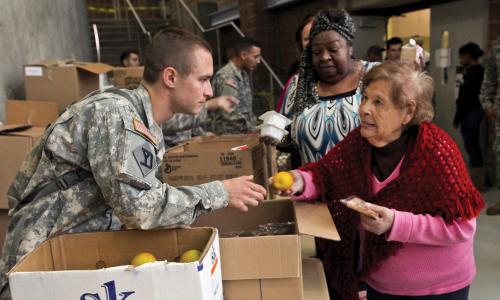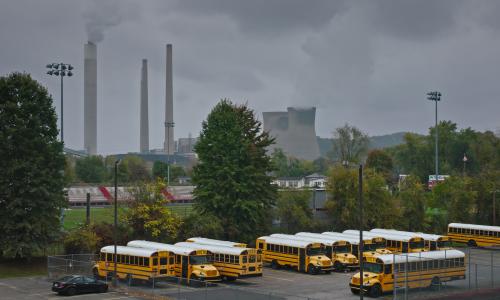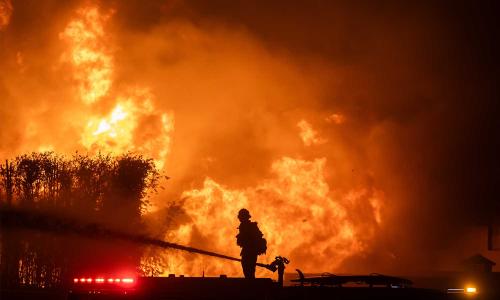The neighboring cities of Opa-locka and Hialeah, located in the western corner of Miami-Dade County, FL, are low-lying with an average elevation of approximately six feet.
Like most of southeast Florida, Hialeah and Opa-locka sit on a very porous limestone. This limestone holds fresh water (the Biscayne aquifer) and is the source of potable water for most of the region. As sea levels rise, the water table also rises, bringing the potential to contaminate wells and contribute to inland flooding.
Projected sea level rise for southeast Florida by 2060 is 9 to 24 inches. The eight inches of sea level rise that has occurred over the last 100 years in Florida is already causing sunny-day flooding during seasonal high tides, and higher sea levels will continue to amplify the storm surges of hurricanes and tropical storms.
Both Opa-locka and Hialeah are low-income communities: though Hialeah has an active and productive business sector, the median household income is only $29,961 (compared to the U.S. median of $53,046), while the median household income in Opa-locka is $20,338.
Both cities have majority minority populations. Opa-locka’s population of 15,967 is 66 percent African American and 35 percent Hispanic, while Hialeah’s population of 233,394 is approximately 95 percent Hispanic and 3 percent African American. A 2010 report referred to Opa-locka as a “thriving food desert,” an environment “that supports substandard nutritional outposts.” Hialeah’s high unemployment rate, coupled with the fact that most adults lack health insurance, contributes to the ongoing economic struggle of its residents. These issues complicate and increase the need for resiliency efforts.
Current climatic changes add a greater sense of urgency to the on-going efforts to address poverty. A 2012 report from the Opa-locka Community Development Corporation identified key strategies for strengthening the city’s economy such as more workforce development initiatives and the designation and preservation of historic buildings and homes. These recommendations both allow for economic development and, if implemented thoughtfully, could make the city significantly more resilient through green jobs and projects, and storm-ready infrastructure upgrades.
The critical need for resilience in Miami-Dade’s low-income communities was most evident during Hurricane Wilma in 2005, which amplified the destruction caused by Hurricane Katrina just weeks before. Katrina hit south Florida as a category 1 storm before making landfall in the Gulf Coast as a category 3 storm. Hurricane Wilma reached south Florida as a category 3 storm with winds of 125 miles per hour and a storm surge of seven feet.
Local resident Christie Diaz was a teenager living with her parents in Hialeah when Hurricane Wilma hit her neighborhood. She remembers her apartment building being without power for two weeks, and government food trucks made deliveries to the community. Her parents were unable to get to work for several weeks, and she was out of school for nearly a month; but, she noted, it was the elderly living in multi-family buildings who had the hardest time receiving assistance.
Diaz noted how streets now regularly flood during routine rainstorms, and this flooding lasts longer than it did 10 or 15 years ago. She says: “Everybody should know about how sea level rise is affecting our community, because it is affecting us now and will be even worse in the future. If we don’t know, we can’t take action.”
Gilberto Turcios is a long-time resident of Opa-locka and was there during the relentless 2005 hurricane season. He recalls trees falling on homes, including his aunt’s, and roots pulling up sewer pipes. He remembers long lines of residents waiting for water, food, and supplies from FEMA, the Red Cross, foreign embassies, and other organizations, but he feels that the local churches were most involved in giving aid to Opa-locka’s residents. He says that although the information residents received about the coming storms was helpful, there was not enough transportation available to residents who wanted to evacuate.
Turcios felt that government agencies failed low-income communities after the storm. Agency personnel promised to repair damaged roofs, but supplied temporary blue tarps and provided no follow-up services.
In Turcios’ view, “the government didn’t do the right thing in poor communities; they just did a quick fix and forgot about it.” He felt that because of climate change, preparing the community and having a plan for recovery is more important now than ever: “Over the last 20 years I’ve noticed flooding happening more often . . . I’m concerned because the more water tends to be around a home the more the water can crack the walls and weaken the base of the house. It’s an economic loss, it hurts property values. . . . Raising a house is very expensive, and only three or so homes have been elevated in my neighborhood.”
As local governments and federal agencies move forward with projects to revitalize Opa-locka’s and Hialeah’s economies, resilience should be a key driver behind these efforts in order to allow for progress even in the face climate change.




